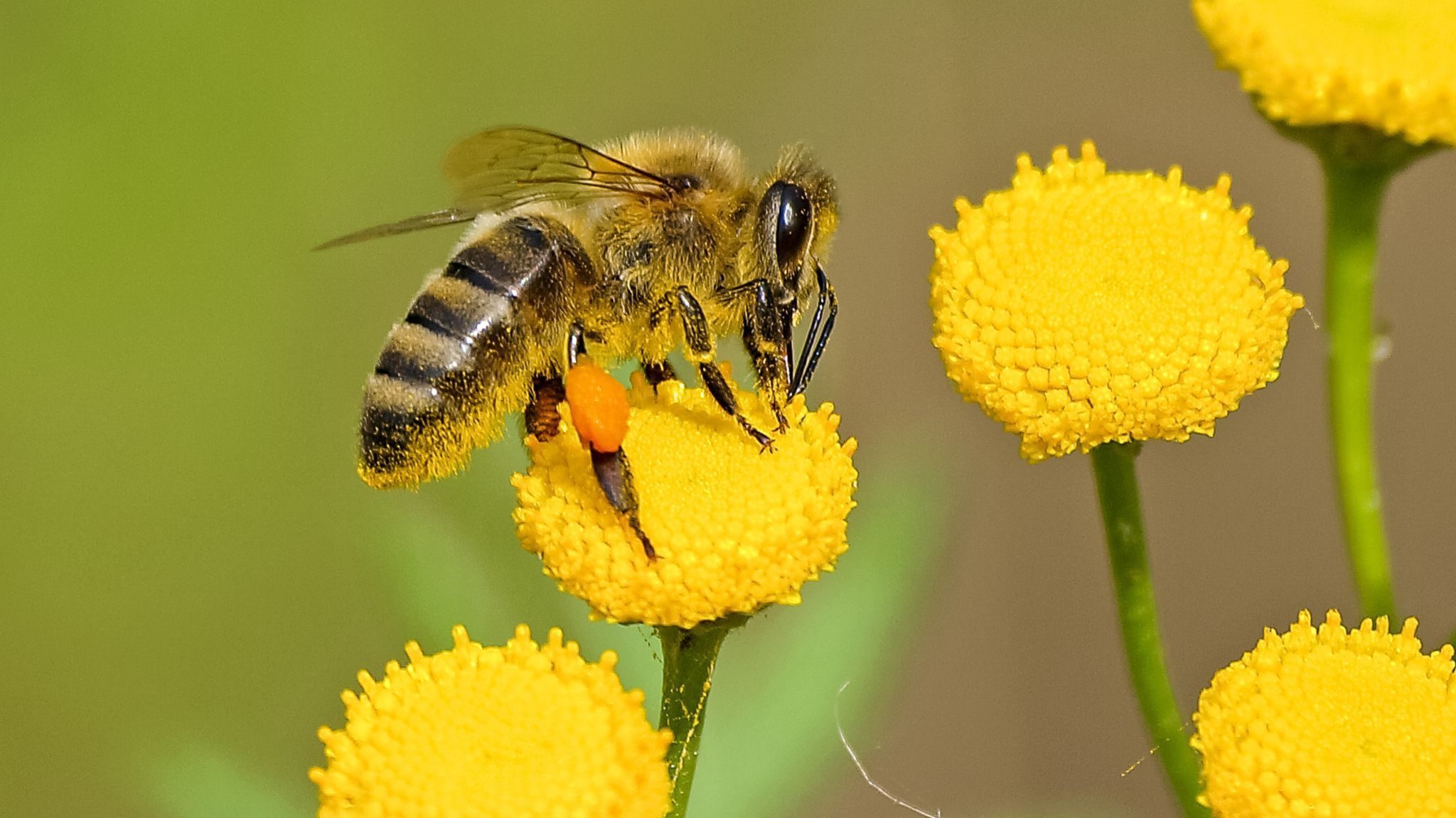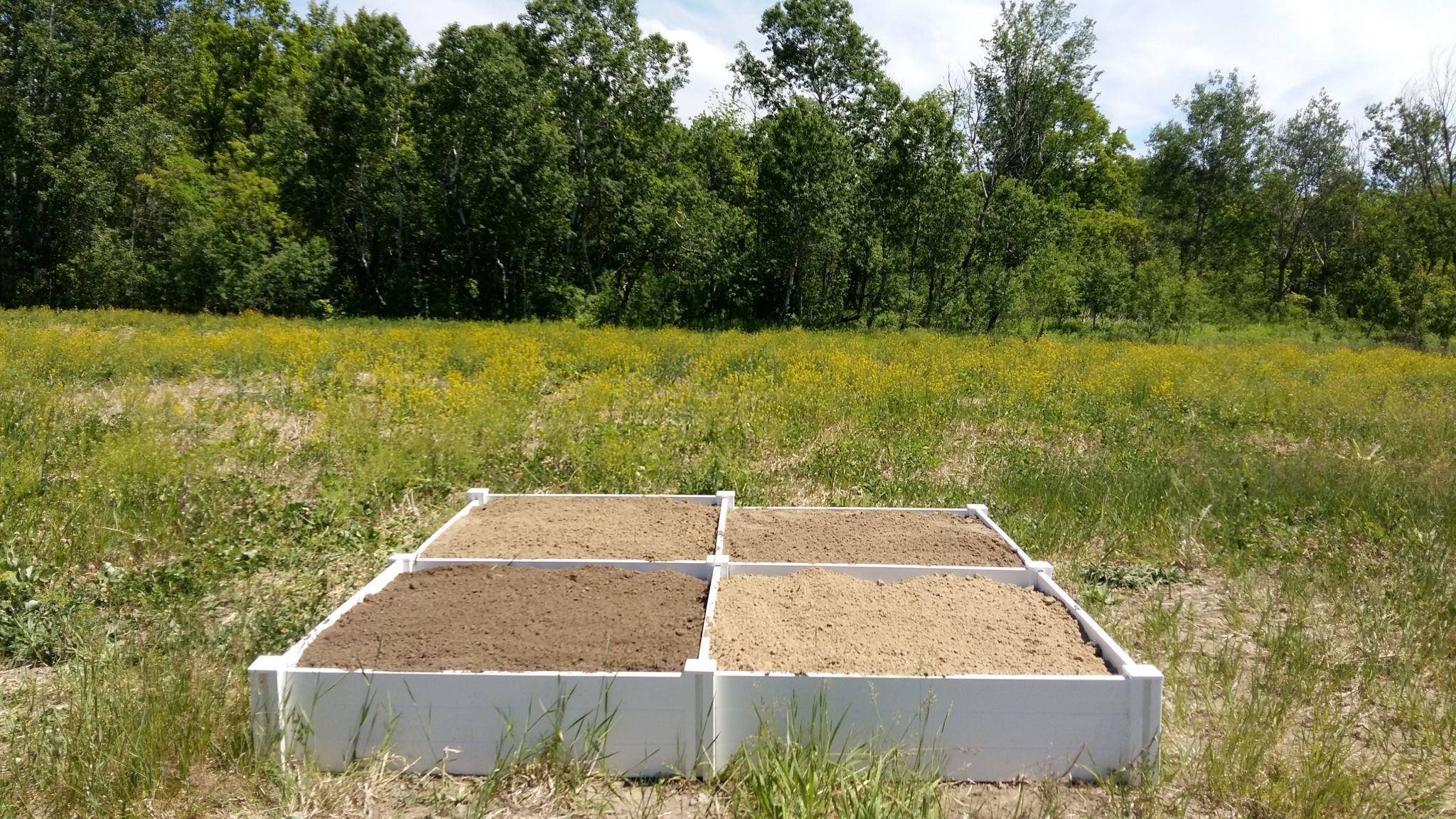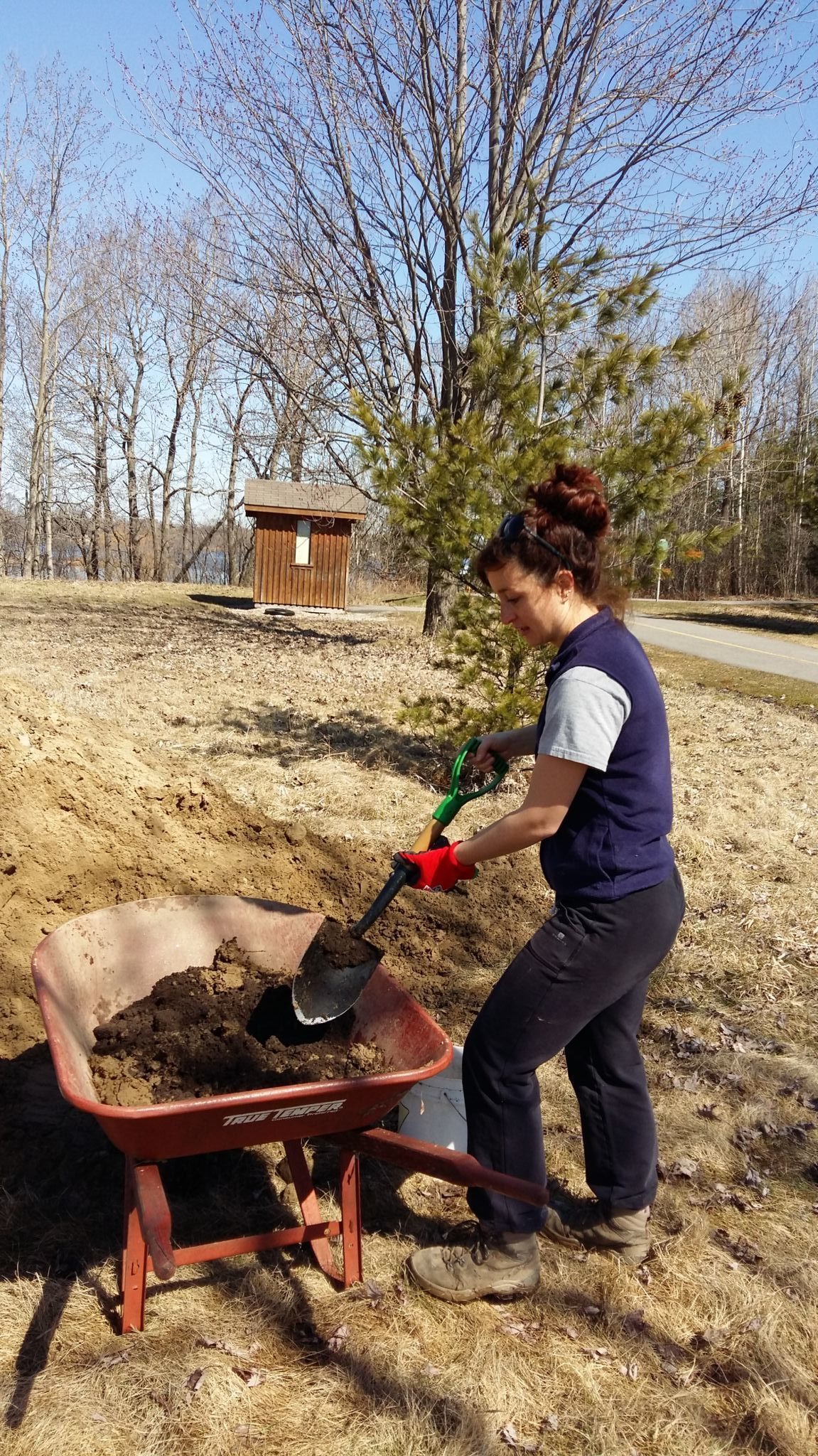Feature Story
Published on June 7, 2021
Bees are a very diverse group of insects, with more than 20,000 species described worldwide, and 900 known species in Eastern Canada. According to local researchers, there are more than 300 native bee species in the National Capital Region.

The commonly known honeybees are a domesticated species imported from Europe. They produce honey and other great products that people love. Because honeybees are not native to Canada, they can only survive in the care of beekeepers.
But what about our native bees? Wild bees are native to Canada, and are crucial for flowering plants and crop pollination. Like honeybees, they face significant challenges such as habitat loss, pesticide use, disease and climate change.
NCC pollinator gardens: A living lab
The NCC, in collaboration with Dr. Jessica Forrest’s lab from the University of Ottawa, is monitoring bees and other pollinator species at two locations:
- the Greenbelt East Pollinator Garden, located in the Green’s Creek sector, near parking lot P27 on the Sir George-Étienne Cartier Parkway
- the Greenbelt West Pollinator Garden, located in the Shirleys Bay sector, south of Carling Avenue near the Greenbelt Pathway
We use different types of monitoring to identify pollinators. Surveys are done by using sweep nets for bees on flowering plants and trap nets for cavity-nesting bees. In 2020, we added planters as part of an innovative project to attract ground-nesting bees.
Digging into ground-nesting bees’ preferences
Bees tend to nest in sandy soil, but there is little research on their preferences. This study allows researchers to better understand the types of soil that certain bees prefer to nest in.
We filled planters with different types of soil, to attract and monitor ground-nesting bees. This is a unique project that will allow us to better understand their habitat requirements, and provide recommendations to gardeners, farmers or anyone interested in creating nesting habitat for wild bees.
If you have questions about the planter project, please contact Cécile Antoine, PhD candidate, at the Forrest Lab, at cantoine@uottawa.ca.
What you can do to help the bees
Plant flowers
Choose carefully which flowers you add to your gardens. Target native pollinator-friendly plants, and avoid using introduced species. Provide flowers throughout the whole season, as bees are active from spring to fall, depending on the species.
Avoid pesticides
Bees are harmless and will not sting. Only females have a stinger and, unlike honeybees or wasps, they are not aggressive. Avoid spraying insecticides, especially on nests: it will do more damage than you think.
Help scientists
If you see a bee nest, report it on apps like iNaturalist or Bumble Bee Watch (for bumble bees only). By doing so, you provide data for future research, and help communities know more about the bees present in their environment.
Go the extra mile
If you are interested in providing habitat for bees, check out these resources by the Canadian Wildlife Federation:
You can even provide some bare ground in a sunny area for ground-nesting bees. See if you can spot one! It’s a challenge: they are really hard to find. You’ll need patience and a good eye.
At the NCC, one of the ways we’re helping bees is by planting pollinator-friendly plants, and restoring natural areas. We also maintain certain areas in a naturalized state, and have a reduced mowing regime in many areas to support biodiversity.


